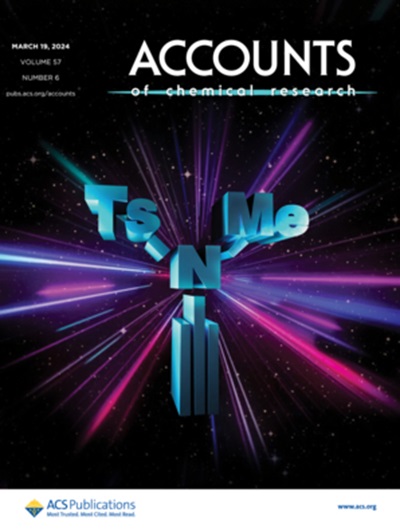Modification of Cu Oxide and Cu Nitride Films by Energetic Ion Impact
IF 17.7
1区 化学
Q1 CHEMISTRY, MULTIDISCIPLINARY
引用次数: 0
Abstract
We have investigated lattice disordering of cupper oxide (Cu2O) and copper nitride (Cu3N) films induced by high- and low-energy ion impact, knowing that the effects of electronic excitation and elastic collision play roles by these ions, respectively. For high-energy ion impact, degradation of X-ray diffraction (XRD) intensity per ion fluence or lattice disordering cross-section (YXD) fits to the power-law: YXD = (BXDSe)NXD, with Se and BXD being the electronic stopping power and a constant. For Cu2O and Cu3N, NXD is obtained to be 2.42 and 1.75, and BXD is 0.223 and 0.54 (kev/nm)−1. It appears that for low-energy ion impact, YXD is nearly proportional to the nuclear stopping power (Sn). The efficiency of energy deposition, YXD/Se, as well as Ysp/Se, is compared with YXD/Sn, as well as Ysp/Sn. The efficiency ratio RXD = (YXD/Se)/(YXD/Sn) is evaluated to be ~0.1 and ~0.2 at Se = 15 keV/nm for Cu2O and Cu3N, meaning that the efficiency of electronic energy deposition is smaller than that of nuclear energy deposition. Rsp = (Ysp/Se)/(Ysp/Sn) is evaluated to be 0.46 for Cu2O and 0.7 for Cu3N at Se = 15 keV/nm.利用高能离子冲击改性氧化铜和氮化铜薄膜
我们研究了高能和低能离子撞击诱导的氧化铜(Cu2O)和氮化铜(Cu3N)薄膜的晶格错乱,因为这些离子分别发挥了电子激发和弹性碰撞的作用。对于高能离子撞击,每离子通量的 X 射线衍射(XRD)强度退化或晶格错乱截面(YXD)与幂律拟合:YXD = (BXDSe)NXD,其中 Se 和 BXD 分别为电子停止力和常数。对于 Cu2O 和 Cu3N,NXD 分别为 2.42 和 1.75,BXD 分别为 0.223 和 0.54 (kev/nm)-1。由此看来,对于低能量离子撞击,YXD 与核停止功率 (Sn) 几乎成正比。能量沉积效率 YXD/Se 和 Ysp/Se 与 YXD/Sn 和 Ysp/Sn 进行了比较。在 Se = 15 keV/nm 时,Cu2O 和 Cu3N 的效率比 RXD = (YXD/Se)/(YXD/Sn) 分别为 ~0.1 和 ~0.2,这意味着电子能量沉积的效率小于核能沉积的效率。在 Se = 15 keV/nm 时,Cu2O 和 Cu3N 的 Rsp = (Ysp/Se)/(Ysp/Sn) 分别为 0.46 和 0.7。
本文章由计算机程序翻译,如有差异,请以英文原文为准。
求助全文
约1分钟内获得全文
求助全文
来源期刊

Accounts of Chemical Research
化学-化学综合
CiteScore
31.40
自引率
1.10%
发文量
312
审稿时长
2 months
期刊介绍:
Accounts of Chemical Research presents short, concise and critical articles offering easy-to-read overviews of basic research and applications in all areas of chemistry and biochemistry. These short reviews focus on research from the author’s own laboratory and are designed to teach the reader about a research project. In addition, Accounts of Chemical Research publishes commentaries that give an informed opinion on a current research problem. Special Issues online are devoted to a single topic of unusual activity and significance.
Accounts of Chemical Research replaces the traditional article abstract with an article "Conspectus." These entries synopsize the research affording the reader a closer look at the content and significance of an article. Through this provision of a more detailed description of the article contents, the Conspectus enhances the article's discoverability by search engines and the exposure for the research.
 求助内容:
求助内容: 应助结果提醒方式:
应助结果提醒方式:


